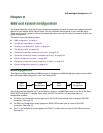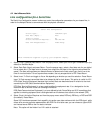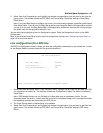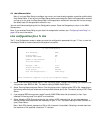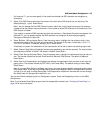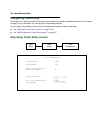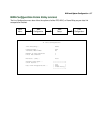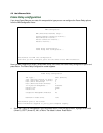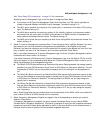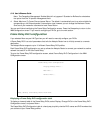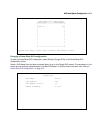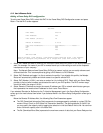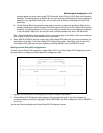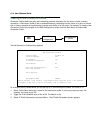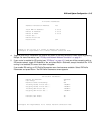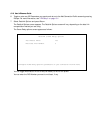WAN and System Configuration 8-9
See “Frame Relay DLCI configuration” on page 8-10 for instructions.
Specifying the Link Management Type is the first step in configuring Frame Relay.
■ If you select an LMI Type (Link Management Type) other than None, the T391 option specifies the
number of seconds between the Status Enquiry messages. The default setting is 10.
■ The N391 option specifies the frequency of full status polls, in increments of the basic (T391) polling
cycle. The default setting is 6.
■ The N392 option specifies the maximum number of (link reliability, protocol, and sequence number)
error events that can occur within the N393 sliding window. If an N392 threshold is exceeded, the
switch declares the Netopia Router inactive. The default setting is 3.
■ The N393 option allows the user to specify the width of the sliding N392 monitored event window. The
default setting is 4.
2. Select Tx Injection Management and press Return. From the pop-up menu, highlight Standard if you want
the frames on your line that exceed the configured service parameters to be dropped at the router,
Buffered if you want the frames on your line that exceed the link capacity to be delayed until the link is less
busy, or None if you want all of the frames on your line to be transmitted. Press Return.
Note: If you select None as the Tx Injection Management type, the three Tx Injection Management options
listed below will remain hidden. Go to step 4.
If you select Standard or Buffered as the Tx Injection Management type, then the Default CIR, Bc, and Be
values will appear (in the corresponding fields below the Tx Injection Management field) in order for you to
define the parameters of the management algorithm.
■ The Default CIR (CIR also referred to as Committed Information Rate) represents the average capacity
available to a given PVC (Permanent Virtual Circuit) or DLCI (Data Link Connection Identifier). This set-
ting defaults to 64000, but you may modify the capacity rate if this setting will not be applicable to
you.
■ The Default Bc (Bc also referred to as Committed Burst Size) represents the maximum amount of data
that your Frame Relay service provider agrees to transfer from a given PVC (Permanent Virtual Circuit)
or DLCI (Data Link Connection Identifier). This setting defaults to 64000, but you may change the
capacity rate if necessary.
■ The Default Be (Be also referred to as Excess Burst Size) represents the maximum amount of data
that your Frame Relay service provider will attempt to deliver to a given PVC (Permanent Virtual Circuit)
or DLCI (Data Link Connection Identifier). This setting defaults to 0, but you may change the capacity
rate if necessary.
Note: Some Frame Relay service providers allow for over-subscription of the DLCIs, which occurs when the
total number of CIRs for all PVCs exceeds the line rate setup.
3. Select Congestion Management Enabled and toggle to Yes or No depending on whether you use this
selection. Press Return.
If Congestion Management is enabled, this option causes the Netopia Router to use in-bound FECNs
(Forward Explicit Congestion Notification). This feature is designed to notify you that congestion avoidance
procedures should be initiated where applicable for traffic in the same direction as the received frame. It
indicates that the frame in question has encountered congested resources.



